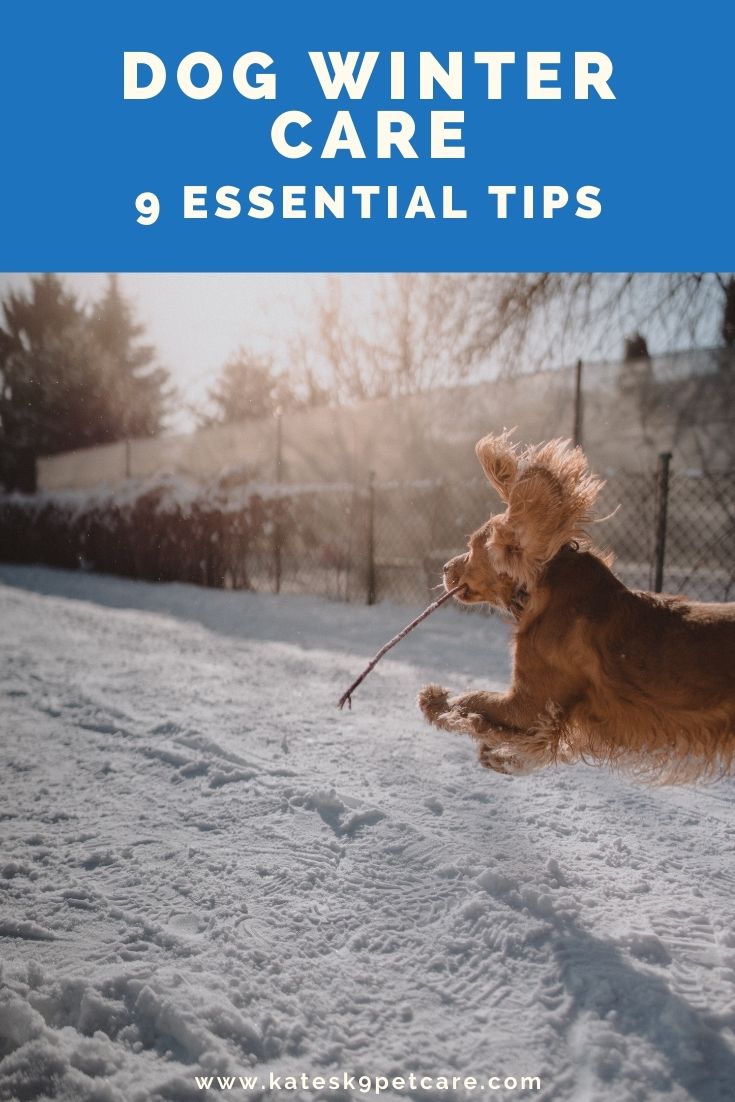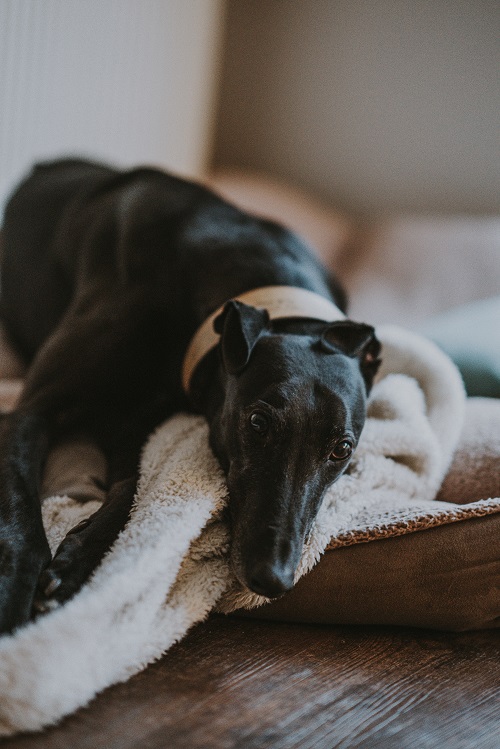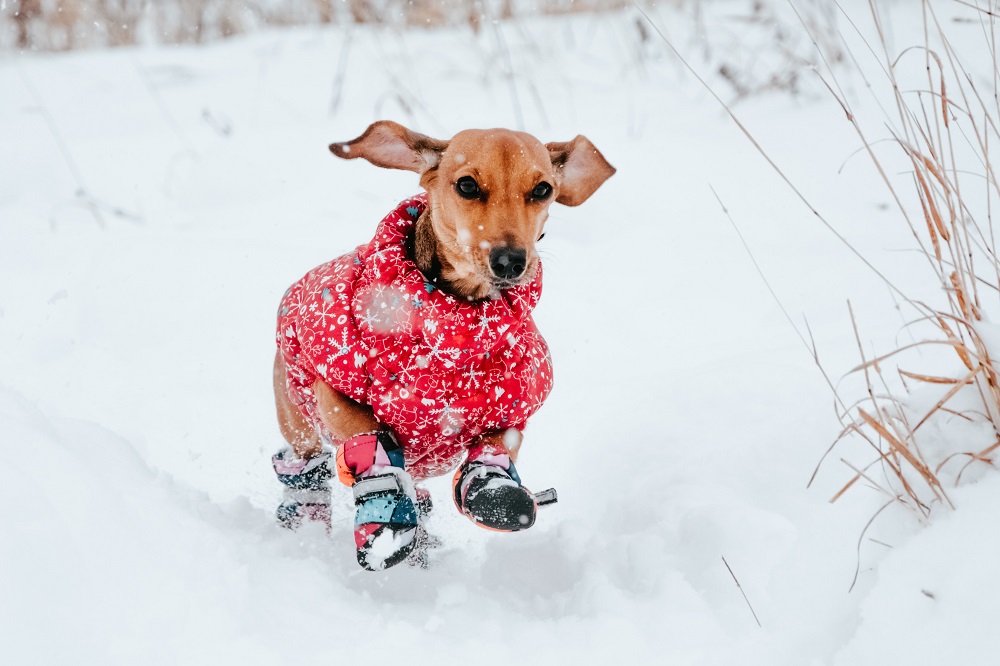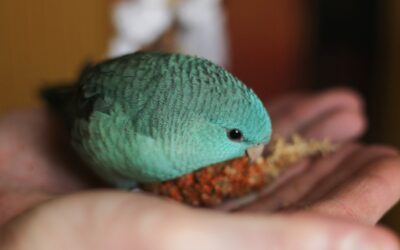At the time of this writing, we’re in the dead of winter and things are chilly! For those of us with dogs, it can be difficult to find a balance between regularly taking your pooch out for some fresh air and making sure they’re not affected by the cold. That’s why we’ve put together a list of 9 of our top tips for dog winter care!
Keep reading to find out how to keep your dog happy and healthy during the winter months.
1. Bundle up!
If you live in an area that doesn’t get below freezing, there probably won’t be much need for your dog to wear a coat. For those located further north, though, it can be a great way to be able to stay outside with your dog for longer in winter. After all, many breeds are a long way away from their well-isolated wolf ancestors.
There’s an immense variety of warm clothes for dogs out there, so have a look to see what works best to bundle yours up nice and toasty. Do remember that, especially with smaller and less furry breeds, as part of proper dog winter care, you still won’t be able to spend too much time outside if it’s very cold.
2. Snow protection
Although many dogs love to play in fresh snow, it can also pose a challenge if you’re just trying to take your furry friend for a walk. It can be very helpful to buy some dog booties to protect their feet, or alternatively, use paw balm before and after walks.
Did you know? Clipping the hair between your dog’s toes can reduce the formation of annoying and potentially harmful ice balls.
3. Salt protection
Possibly even worse for your dog’s paws than snow is salt. Spread in the streets, de-icing salt can be anything from rock salt (sodium chloride) to calcium chloride to magnesium chloride. These can pose a problem if your dog tries to lick them off its paws and can also irritate the skin.
To prevent issues, you can have your dog wear booties. Alternatively, you can opt to give their paws a good wash and use some paw balm before and after a walk.

4. Activity level
As mentioned in the intro, one of the big challenges that winter poses is to find a balance between keeping your furry friend nice and toasty indoors, but still making sure it gets enough exercise.
If you don’t want to spend too much time outdoors, it’s important to spend plenty of time playing in the home. Otherwise, you might find your dog getting restless or even destructive due to the pent-up energy! Weight gain can also be a problem during the winter months.
5. Food & water
Since it’s very likely you’re not going on long walks and spending much time in the park or on the beach as you would in summer, your dog is probably not moving around as much as usual, even if you do try to make sure it gets some exercise indoors.
As part of dog winter care, this lowered activity level should be reflected in your its diet. It’s probably a good idea to feed a little less to make up for the smaller amount of calories burned daily, or your pooch might end up entering spring carrying a few extra pounds.
If your dog spends a lot of time outside (some just love being in the yard year-round!), check its water bowls very regularly to make sure they don’t freeze. Have multiple sources of fresh water available at all times.
6. Skincare
Winter walks with your dog can be lots of fun, but they can take their toll not just on your own skin (dry and flaky face and hands, anyone?) but theirs as well. We’ve already mentioned paw balm, but here are some other things you can consider trying:
- Try to limit baths and use a moisturizing shampoo or dog conditioner to avoid drying out the skin too much.
- Brush your dog regularly to distribute natural oils and remove dead skin cells.
- Use a humidifier if the air in your home tends to be dry during winter.
- Use coconut oil to massage dry skin patches.
7. Winter-specific safety
Part of dog winter care is thinking about safety hazards present during winter that might not be as much of a problem during the rest of the year. Have you changed anything in and around your home that might affect your dog? A few examples of things to consider are:
- Antifreeze: sweet-tasting and very toxic, you should keep this as far away from your dog as possible at all times.
- Fireplace: although your dog might know not to stick its paw in an open fire, we all know our furry friends aren’t always fully aware of their tail and other body parts. You should make sure it can’t reach the fire, come intp contact with extremely hot surfaces or knock things into the fireplace that can cause a fire hazard.
- Candles: they sure make for a cozy atmosphere, but make sure your dog can’t get into them or knock them over.

Don’t forget to provide your dog with a warm and comfortable spot inside the home as well.
8. Outdoor safety
#7 on the list also applies when you’re out and about: dangers pop up during winter that might not be present during summer. For example, consider:
- Frozen ponds and lakes: keep in mind where they are, as they can be hidden by snow, and avoid them! You never know whether the ice is thick enough to support your dog.
- Darkness: with shortened daylight hours, you might end up walking your dog in the dark more often than usual. Wear some reflective gear or lights to keep both of you safe.
- Recall: it’s easy to lose a dog in a snow-covered landscape. Make sure you train recall with your pooch and that it’s chipped in case things do go south.
- Recognize the signs: do you know what hypothermia or frostbite looks like in a dog? Do your research to ensure you can recognize if anything is wrong.
9. Keep an eye on the oldies
While a cozy blanket or bed should be enough to keep most dogs happy indoors during wintertime, the oldies might need a little more to stay comfortable. Arthritis can flare up in older dogs, so be sure to provide a heated bed and consider asking your vet if there’s anything else you can do.
Also keep in mind that older dogs aren’t as nimble, so walking ice and snow can be more difficult for them. Additionally, their bodies may not be able to regulate their temperature as effectively.
Conclusion
With these dog winter care tips, you and your furry friend should be able to make it through the cold months unscathed! Don’t forget to have a little fun either, though: many dogs love to spend some time playing in the snow and cozying up in the warm indoors after. Check out our post about fall activities with dogs if it’s still a little early.







